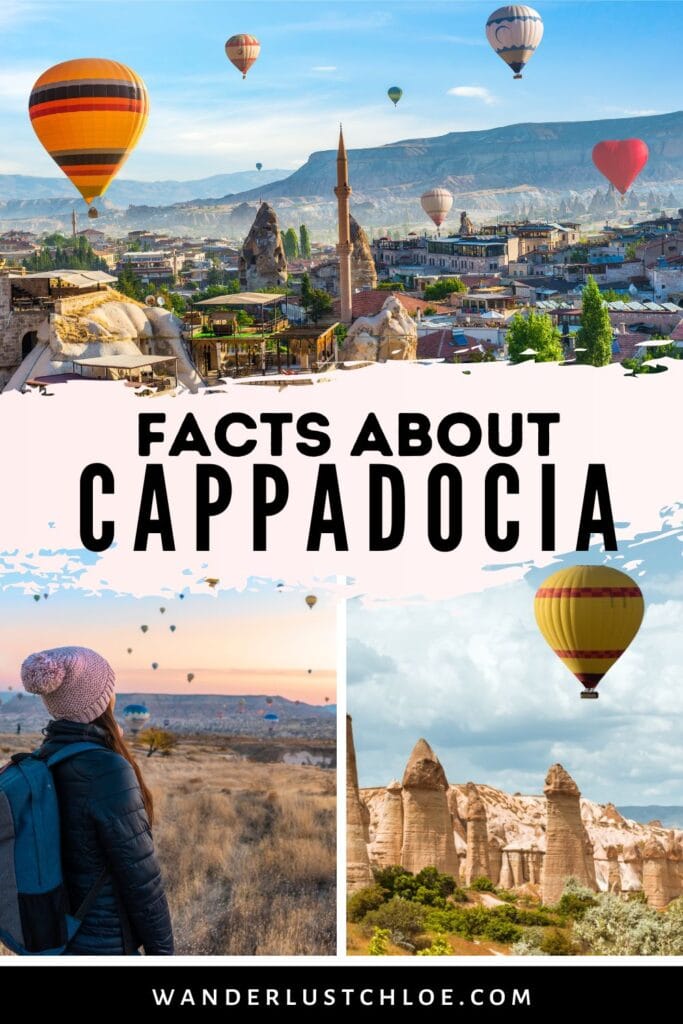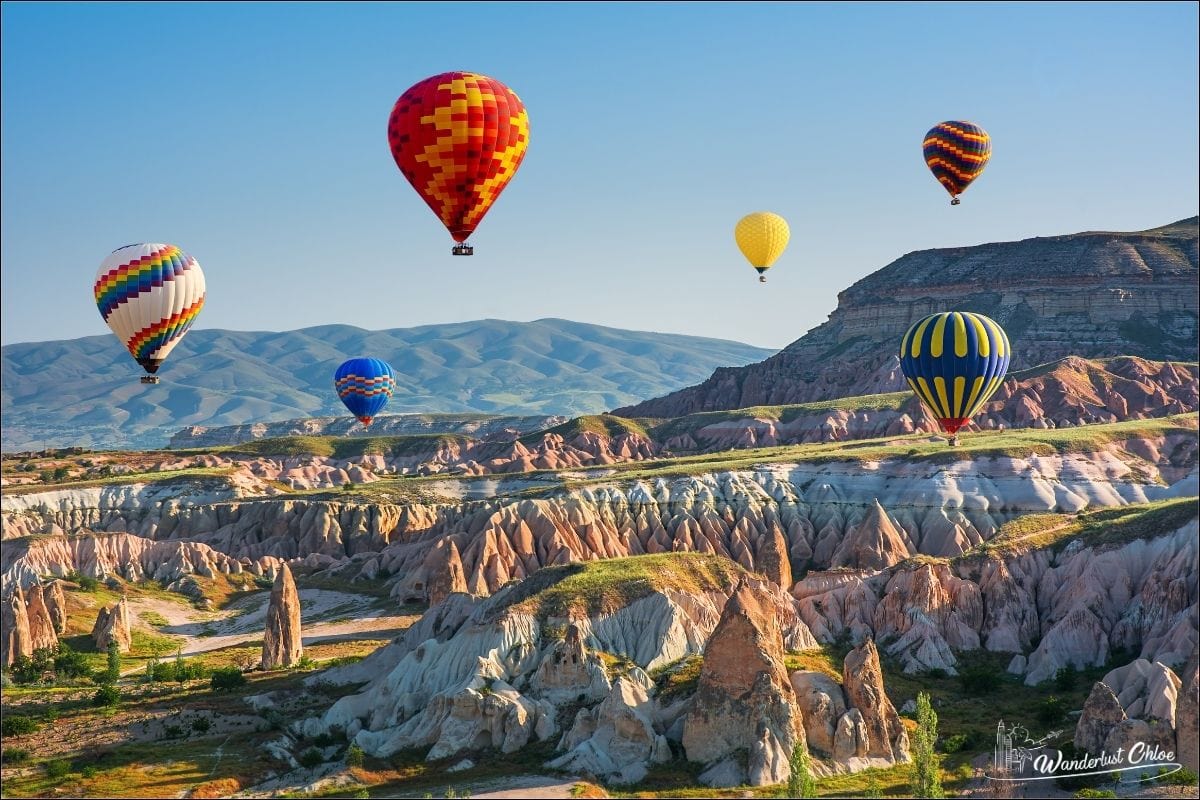From fairy chimneys and underground cities to hot air balloons and ancient villages, these interesting facts about Cappadocia are guaranteed to amaze you!
Have you visited Cappadocia yet? It’s one of the most magical places I’ve been on my travels. With its amazing rock formations, strange underground cities, and fresco-decorated churches, at times it feels more like you’ve entered a fantasy movie than real life! Nestled in the heart of the Turkish region of Central Anatolia, Cappadocia’s unique landscape is a huge reason to visit.
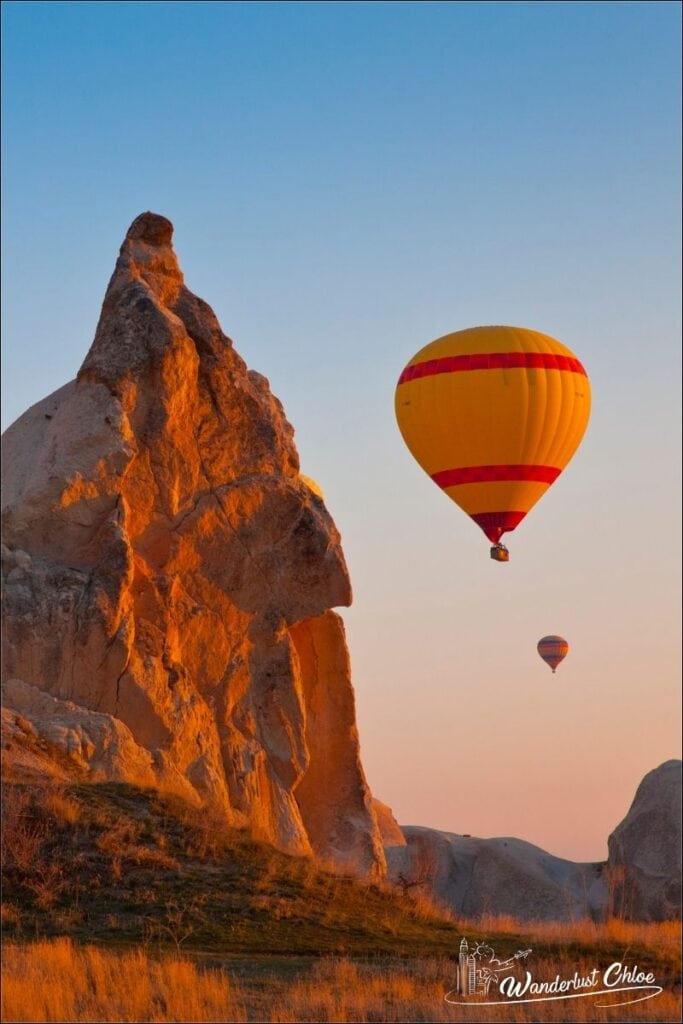
It is also a place where you can enjoy some of Turkey’s best fresh food, sample world-class wines, and drift over the landscape in a hot air balloon. Several sites within the region have been designated UNESCO World Heritage Sites too, which have preserved Cappadocia’s unique blend of natural and human wonders.
So, if you’ve ever dreamed of visiting this special part of Turkey, you’ve come to the right place. I’ve already shared my guides to the best cave hotels in Cappadocia and given a detailed rundown of what it’s really like to go hot air ballooning. So, what next? Well it’s time to share some amazing facts about Cappadocia that will get you even more excited for your trip!
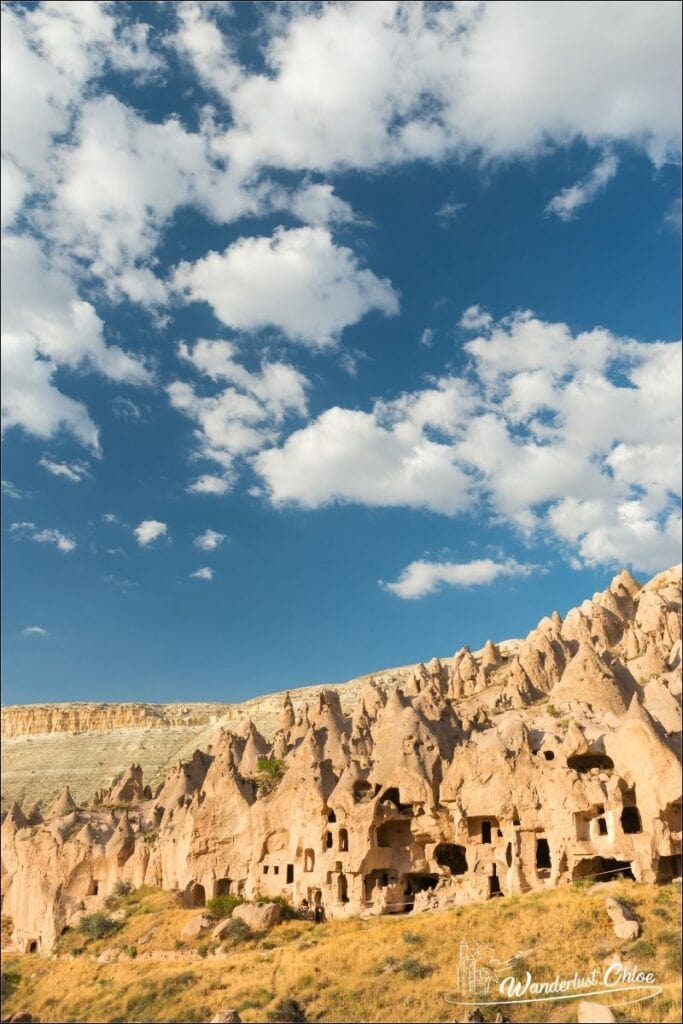
Amazing Facts About Cappadocia
How Cappadocia got its name
Among the fun facts about Cappadocia is the origin of its name. Historians believe that the name comes from the ancient Persian word “Katpatuka,” meaning “the land of beautiful horses.” This part of ancient Turkey was once famous for its horse breeding and you’ll occasionally see wild horses roaming free as you travel around Cappadocia. When Cappadocia was ruled by the Persians, horses formed part of the taxes levied on the inhabitants.
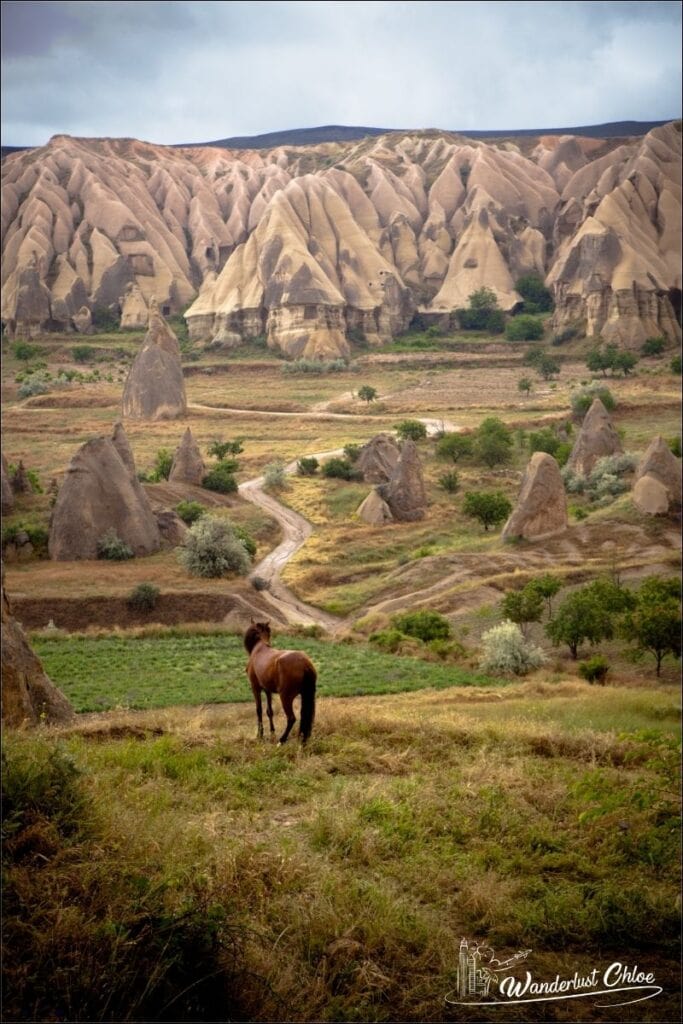
If you’re keen to follow in their footsteps, you can still experience the thrill of horse-riding in Cappadocia on a tour today. But if that sounds a little too scary, you could explore the scenery on an ATV tour at sunset instead.
The Byzantine Era
Byzantium was the eastern section of the Roman Empire. During the Byzantine era, Cappadocia became a sanctuary for early Christians escaping from Roman persecution. Cappadocia’s unique geological formations allowed early settlers to carve out extensive networks of underground cities and cave churches where they could hide.
Today, at sites such as the Göreme Open-Air Museum, you can visit churches dating from the 10th to the 12th centuries. These places of devotion are decorated with frescoes of intricate biblical scenes and saints painted in vibrant colours on the cave walls.
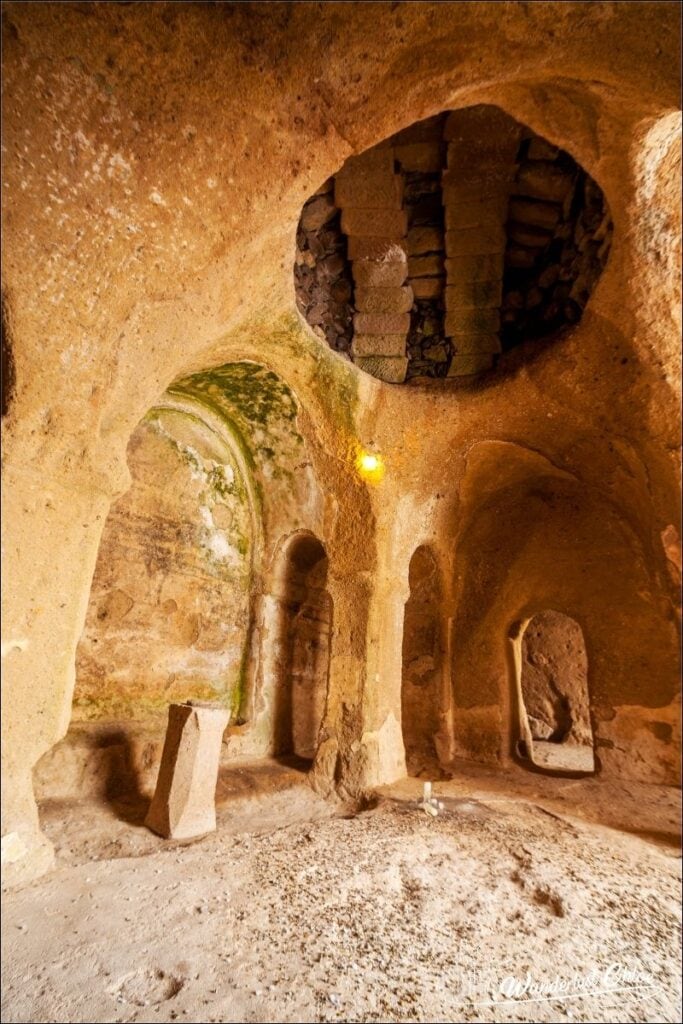
Cappadocia’s Fairy Chimneys
The most striking feature of Cappadocia is its fairy chimneys. Millions of years ago, volcanic eruptions formed these tall, thin spires of rock that dot the landscape. The soft volcanic rock (known as tuff) has been sculpted by water and wind over millennia to create the whimsical formations you can see today.
I’d recommend taking a tour of the best fairy chimney sites with a knowledgeable local guide. They’ll show you all the best places for photographs too.
In the Love Valley and the Ilhara Valley, you can get up close to dozens of these pillars surrounded by neat farmland and orchards. Or head to the Zelve Open-Air Museum, which is set in a valley with thousands of fairy chimneys. It’s located in a village that was occupied until the 1960s and includes an underground Byzantine Monastery.
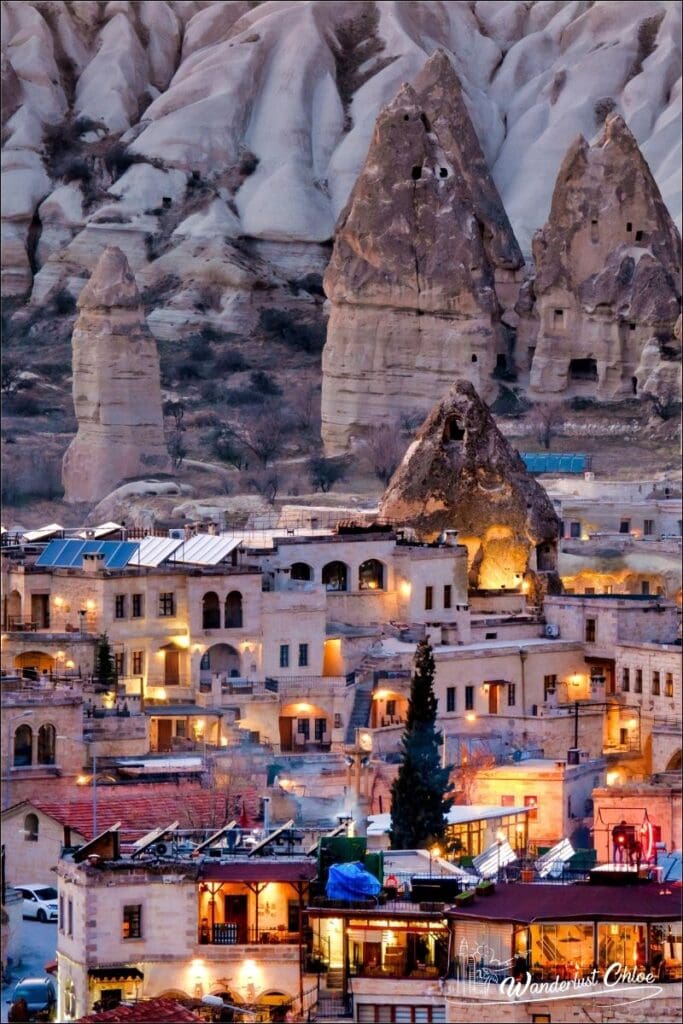
Go Hot-air Ballooning
No visit to Cappadocia would be complete without experiencing the magic of a hot air balloon flight. Around 100 hot air balloons take to the sky every morning in Cappadocia.
This is one of my favourite experiences from my travels! As you float gently over the fairy chimneys at dawn, you’ll get to see some amazing panoramas of the weird and wonderful landscapes. It’s a region that looks like it hasn’t been changed for centuries.
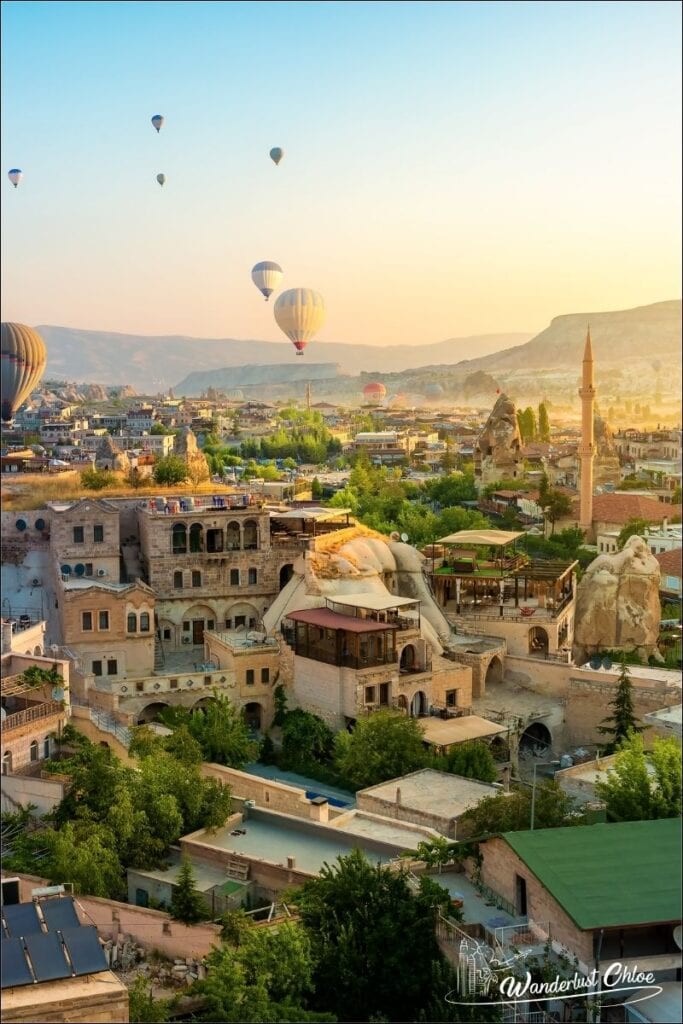
I love the sense of peace and timelessness you get from hot air ballooning in Cappadocia. If you’re thinking about booking this, I’d recommend reading about my experience here.
It’s amazing how quiet it is up in the skies. As the rising sun paints the landscape with golden light you can peer down and wonder about the adventures you’ll be having amongst the fairy chimneys later in the day!
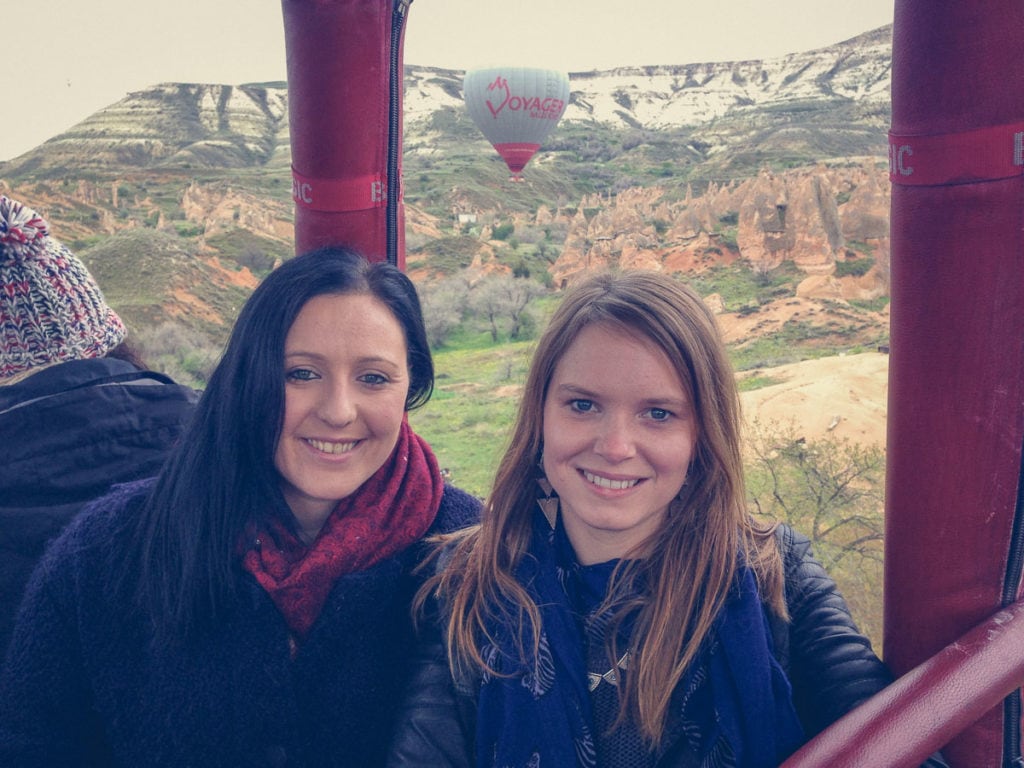
Goremë National Park
With human history dating back thousands of years, it’s no wonder the spectacular landscape of the Goremë Valley has been designated a UNESCO World Heritage Site. One of my favourite facts about Cappadocia is the way that “troglodyte” villages were dug by the inhabitants for protection from persecution.
But, even though they were forced to hide underground, the people still managed to create beautiful artworks in the form of colourful frescoes, many of which are located in the Goremë National Park. Look out for the massive stones that could be rolled into place to block the tunnels if invaders arrived.
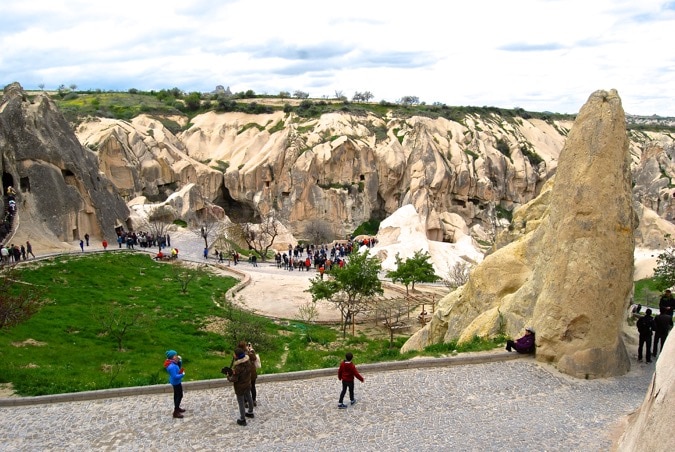
Why are Cappadocia’s frescoes missing their eyes?
One of the more interesting facts about Cappadocia is the reason why most of the frescoes you will see have had their eyes chiselled out. This is due to “iconoclasm” which was a movement popular in the 8th and 9th centuries.
Iconoclasts believed that the creation and worship of religious images were forbidden and that the images had to be destroyed. By defacing the eyes of the people and saints depicted in the frescoes, iconoclasts believed that they were “blinding” them which would diminish their power.
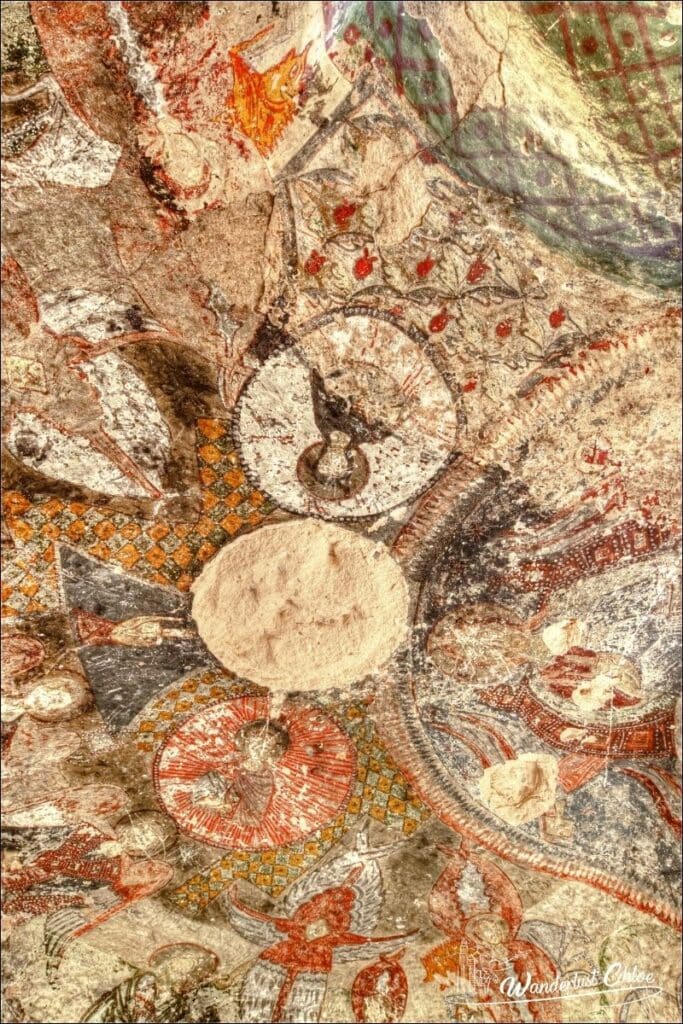
Underground Churches
There are approximately 600 subterranean churches in the Cappadocia region. Archaeologists believe there are even more of these amazing places of worship still to be discovered.
The most visited underground churches are in the Goreme Open Air Museum, the Zelve Valley, the Red Valley and the Rose Valley. But as you explore Cappadocia you’ll often find tiny forgotten chapels hidden away in quiet corners, far from the tourist crowds.
Explore the Underground city of Derinkuyu
If you want to dive deeper into the history of the region, there are several extensive underground cities that reveal a wealth of interesting facts about Cappadocia. These subterranean networks, some of which date back to 2,000 BCE, were used by early Christians as hiding places and as refuge from persecution.
The largest of these, Derinkuyu, could shelter as many as 20,000 people along with their livestock and food stores.
Ventilation shafts, wells, intricate tunnels and communal spaces such as churches and wine cellars made up these underground marvels. If you take a tour of these underground marvels you’ll be amazed at the creativity and ingenuity of the people who built them.
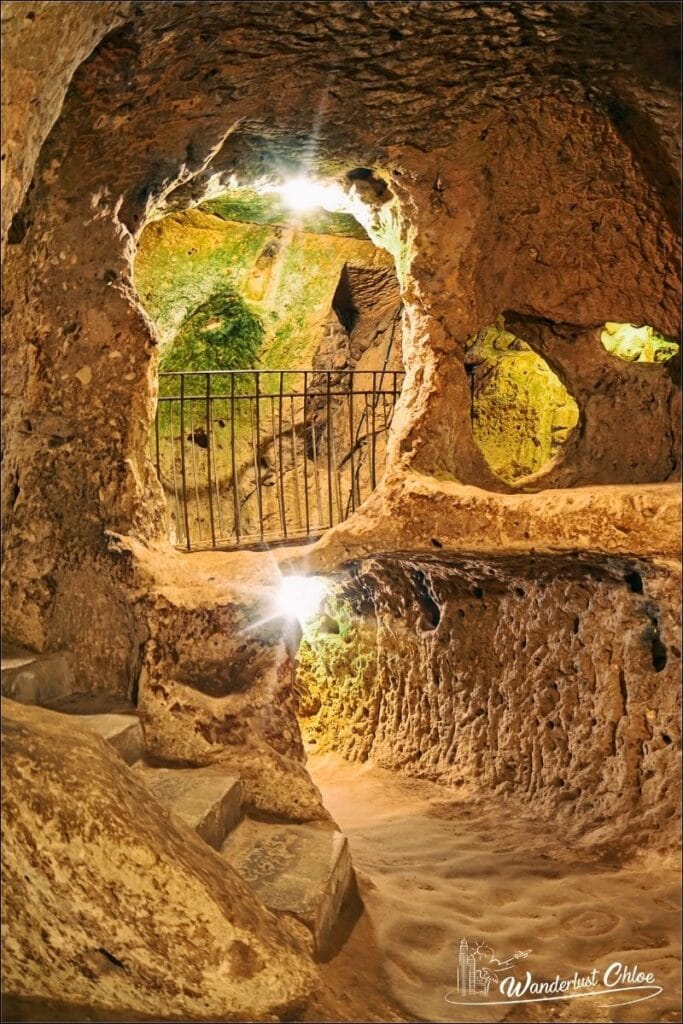
Why are there so many small holes in the rock faces?
One of my favourite facts about Cappacocia is the reason why you’ll see so many small holes carved into the rocks. As well as ventilation holes and places for smoke to escape from cooking, many of these small holes were actually dovecotes.
Pigeon-keeping has been a tradition in Cappadocia for centuries and the birds weren’t just kept to brighten up the place. In fact, their droppings were used as fertiliser in agriculture and as a component in the paint used in the frescoes.
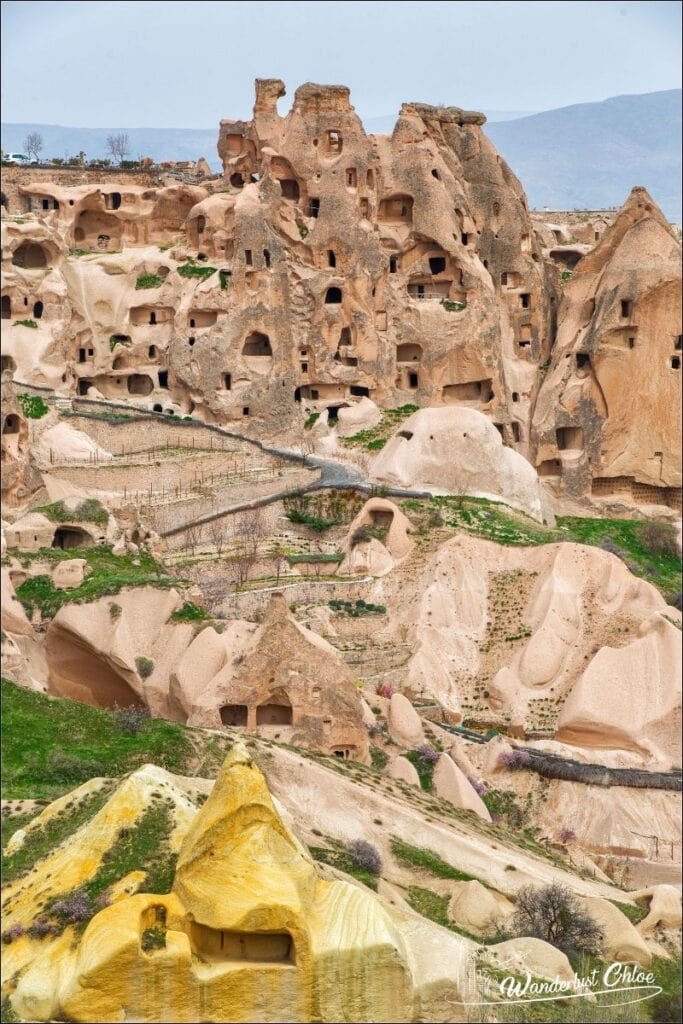
Nevsehir and Ürgüp
People have lived in the Cappadocia area since around 2000 BCE when the Hittite tribes began migrating into the region from Eastern Europe. With such a long history, it’s no wonder that towns such as Nevsheir and Ürgüp have so many layers to them.
The name Goreme means “one cannot see in here.” This refers to the ways that early Christians used to hide themselves from marauding persecutors by disappearing into the underground cities they had built.
These towns offer a glimpse of modern Turkish life existing side by side with traditional ways of living, all amid a spectacular backdrop of naturally sculpted rock. You can stay in a cave hotel carved out of volcanic rock (I can confirm that this is an amazing experience!) and dine in underground restaurants while local musicians entertain you with local folk songs.
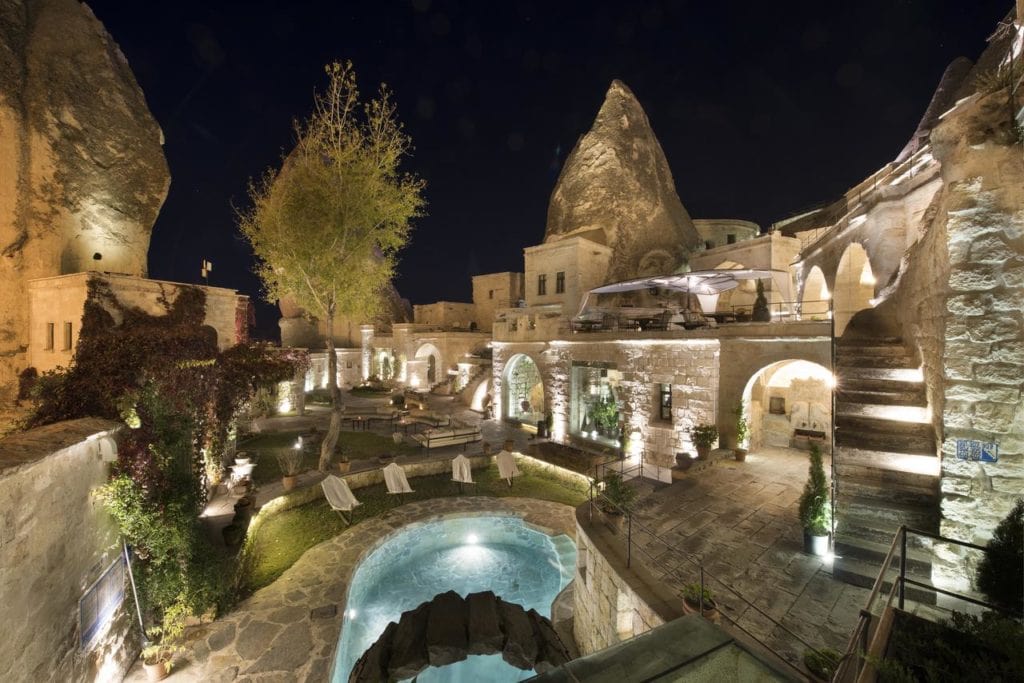
In the evening, lanterns are lit in the windows of the underground houses, creating a beautiful ambience as the sun sets on the silhouettes of the fairy chimneys.
Vineyards and Viticulture
It might surprise you, but the rich soil created by the volcanic eruptions 60 million years ago is actually ideal for growing grapes. Cappadocia is renowned for its viticulture, with the region’s volcanic soil contributing to the unique flavour of its wines.
There are wine-tasting shops scattered throughout the main towns in Cappadocia where you can sample a variety of local wines. Many of these have been perfected over centuries of trial and error. It’s fair to say that the tradition of winemaking is deeply ingrained into Cappadocian culture. I even noticed that many of the underground sites in the area had their own wine presses! It’s fun to try and spot them while you’re out exploring.
Cappadocia festivals
Cappadocia hosts several festivals during the year. These include the Cappadox food festival, held in June, which celebrates the art, gastronomy and music of Cappadocia.
Another popular one is Balloon Fest Cappadocia. This event is held over four days in July to celebrate Cappadocia’s hot-air ballooning heritage which began in 1991. You’ll see over 100 balloons of all shapes and sizes floating in the sky during the festival.
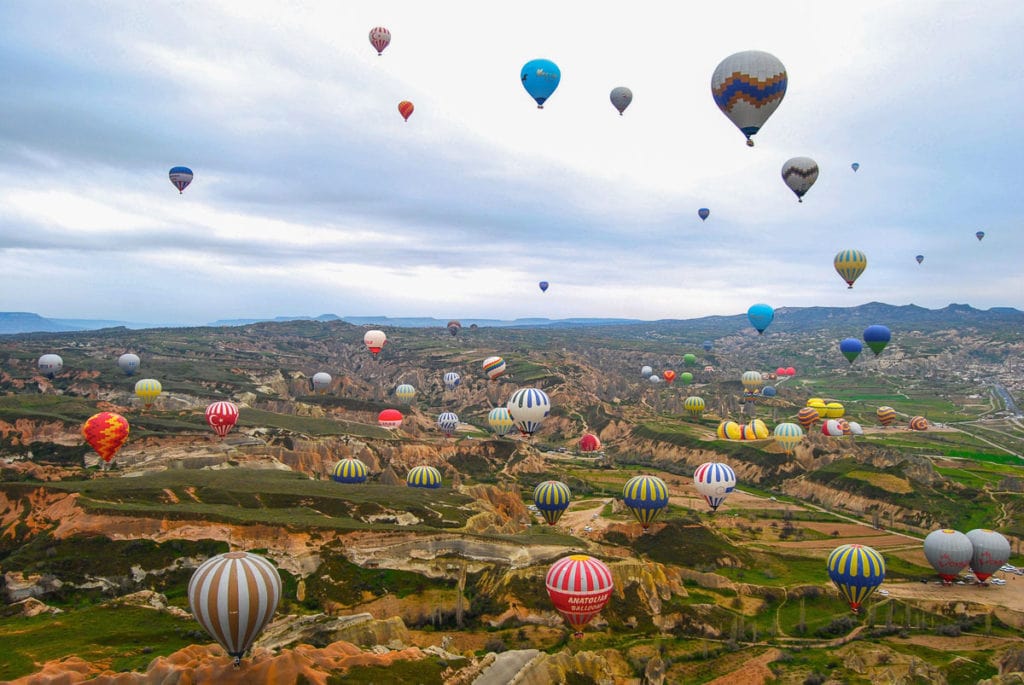
If you’re into music, don’t miss the annual Cappadocia Music Festival in July. This week-long event sees choirs and orchestras performing classical music in unique settings such as Byzantine chapels, man-made caves and town courtyards.
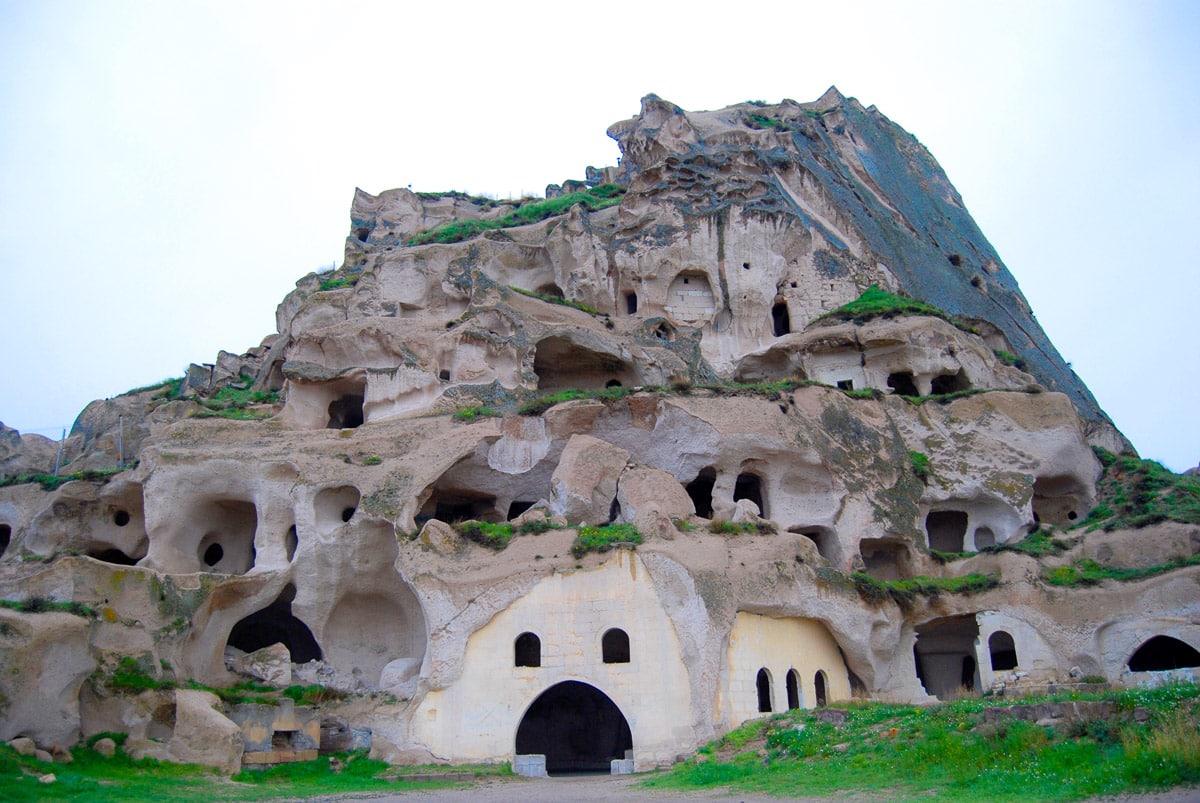
Savour the Delights of Turkish Food
Your culinary journey in Cappadocia can be as fascinating as your adventures through, under and above the landscape! Turkish restaurants throughout the region serve traditional dishes that have been passed down from generation to generation. Don’t miss pottery kebabs – cooked in traditional clay pot and cracked open at the table. It’s a fun element of theatre for your dinner!
A great way to get a hands-on feel for traditional Cappadoccian cooking is to take a cookery class. Starting with a visit to a local market to purchase fresh ingredients, you’ll sip delicious apple tea while your host shows you how to prepare lunch using ancient methods and recipes.
Cappadocia combines fascinating human stories with some of the world’s most unique scenery. Life in this part of Turkey is rich with traditions and overflowing with incredible history.
From drifting through the silent morning sky in a hot air balloon to exploring the tunnels of cities dug deep underground, it’s an ideal place for an adventurous trip. Hopefully this list of interesting facts about Cappadocia will enhance your travels in the region.
If you’re looking for more information on this wonderful region of Turkey, check out these posts:
- Hot Air Ballooning In Cappadocia
- 21 Things To Know Before A Hot Air Balloon Flight In Cappadocia: Travel Tips For A Hassle Free Adventure
- Top Things To Do In Cappadocia, Turkey
- 17 Best Cave Hotels In Cappadocia
- How To Get From Istanbul To Cappadocia
Enjoyed this post? Pin it for later…
